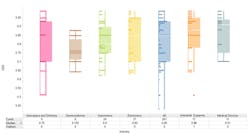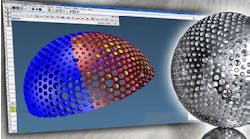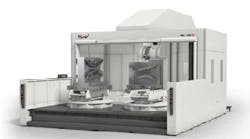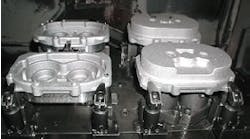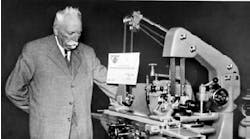Venice has its canals, Rome its Coliseum, Florence its heritage of art. But Italy now has a surprisingly emerging new signature market: a burgeoning machining sector.
Of the sights and sounds associated with the Italian specialty, the whirl and clickity-clack of industrial machinery might not rank nearly as high as art, fashion, cuisine, architecture or music. But that doesn't mean Italy's growing machinery sector is any less sophisticated.
Italy's engineering sector has emerged as one of the fastest growing industries in the country, accounting for 18.7% of machinery produced in the European Union, ranking only behind the leader, Germany (33.5%), but ahead of France (10.5%) and the United Kingdom (10.4%), according to a Eurostat analysis.
"You have two identities: the national identity and then the customer perception," says Giancarlo Caimmi, commercial director for Nordmeccanica, an Italian coating and laminating equipment manufacturer. "There's a big difference between the two. But the reality is Italy has a long tradition of mechanical engineering and we're very proud of what we do."
Like many countries within the European Union, Italy’s manufacturing base has been hit hard over the past year. According to a recent report by Federmacchine, a federation that represents 12 Italian trade associations, these changes have been a result of dramatic drop-offs in domestic demand and, to a lesser extent, from abroad.
But while a host of industries struggled with drops in output, one significant bright spot, according to the report, was exports for machinery and equipment, which jumped 50.1 billion Euros.
"Italy has only 60 million people," says Alessandro Marcolin, sales manager at PAL s.r.l., an Italian manufacturer of particle boards and related material for the panel industry. "To be strong as an economy, we have no other choice, no?"
Italy has seen significant jumps outside the European Union, specifically in Russia (which jumped 6.9% in 2008), Africa (13.8%) and South America (16.5%).
Although Italy's machine manufacturing accounts for nearly half the GDP of that of Germany, Italy has over 41,000 companies in the sector -- more than twice the Germans (just over 19,000.) This goes a long way toward illustrating what makes Italy's sector so unique. Federmacchine's report explains that the average number of employees in Italy's machinery and equipment sector is 13.7 individuals, by far the lowest in Europe.
"The smaller, family-owned company allows for you to be more flexible," says Federmacchine's Sacchi. "You have an individual stake in your business. You can respond quickly and adjust as you need to."
But not everyone agrees with this. Valentina Gollini, a spokesperson for Sacmi, a manufacturer of machinery for food processing and packaging, suggests that the age of a mom and pop company is challenged by modern pressures which require more sophisticated management.
"When a family is still leading and directly involved in day-to-day decision process, there could be the risk of keeping a mentality not yet oriented to today's challenges of a global market," she says. "You have to make quick and correct decisions and improve your global presence or you're going to have to close your doors."
Italy's presence in machine manufacturing has grown for a multitude of reasons: smarter management, more sophisticated technology and changes in the marketplace. But according to Nordmeccanica's Caimmi, another significant factor is understanding the needs of a wider group of customers.
"If you go back 10 to 15 years ago, everything was a matter of price," says Caimmi. "The majority of Italy's manufacturing sector was fighting competitive pressures by making a machine as cheaply as possible. That meant cutting assembly costs and doing it any way possible in order to be attractive from a pricing perspective. But I think most companies now are focusing on quality and service.
"You have to make machines more down-to-earth," he continues. "It has to be reasonable and efficient. Maybe it won't be as sophisticated as some of the top players. The most sophisticated applications are usually coming out of Germany. The medium-range product, the ones that sell in the highest numbers, comes out of Italy."
Machinery and equipment doesn't quite have the same romantic feel as wine, art and architecture. But Italy's proved equally adept regardless of sector.
